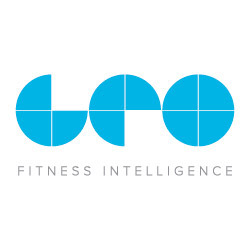LEO Fitness Intelligence
You know how the saying goes, if we got a dollar for every fitness wearable story recommended to us we could retire. So when we first saw LEO we naturally thought, oh another fitness device.
 After diving into LEO a little further we found that Leo is providing fitness intelligence to it’s user in unheard of ways. LEO goes beyond the standard heart rate monitor and calorie calendar.
After diving into LEO a little further we found that Leo is providing fitness intelligence to it’s user in unheard of ways. LEO goes beyond the standard heart rate monitor and calorie calendar.
When you’re wearing LEO it not only monitors everything that every other fitness monitor is watching but it monitor’s your body’s “complex biosignals directly and translates that data into simple and actionable recommendations.” The company says on their Indiegogo page.
For starters LEO goes around your legs not your wrist. There are more places for LEO to interact with your body and gather important data on your legs rather than your arms. LEO can warn you of a potential injury if you’re landing too hard when you run. LEO can tell you if you’re not pushing to your optimum performance when riding a bike. With a wrist style fitness monitor you’re monitoring heart rate to make those recommendations, and you could really be doing anything to get that data point. With LEO it senses what you’re doing from the way your legs are moving and can make better recommendations. LEO can even detect muscle imbalance based on your right vs left leg.
LEO isn’t just some fly by night device looking to cash in on the latest tech craze. It’s actually a labor of love created by Dr. Leonard MacEachern. MacEachern tells the Ottawa business Journal that he used to be overweight. “I was a big boy. I was like 300 pounds back in 2004,” he said. “My daughter came along in 2005 and I said, ‘Enough is enough,’ so over seven months I actually lost 110 pounds.” he told the OBJ
MacEachern used a polar heart rate monitor while he was losing the weight but found that device didn’t give him the real data he needed after he had shed the pounds but waned to tone muscle.
LEO isn’t the latest craze in fitness trackers it’s actually a very smart, intelligent and well rounded bio-medical device, that won’t break the bank.
“Popular fitness wearables estimate performance metrics based on a very limited data set because they are predominately accelerometer-based, meaning they track their own motion instead of measuring human body signals,” MacEachern said. “LEO takes the guesswork out of fitness tracking because it is a biomedical device that actually monitors your body. This data is then put in an easy to understand format with clear instructions on how to interpret and use it – a huge differentiator from previous generations of fitness wearables, which provided information, but little or no guidance on what to do with that information.”
- Tracking muscle activity, hydration, lactic acid levels, heart rate, and movement
- Providing education and advice throughout a user’s workout with simple and actionable recommendations
- Identifying signs of future injury and recommending ways to avoid it
- Improve training with intuitive visualizations with the raw data available
- Competing with friends, comparing workouts with pro athletes and networking with the local fitness community
Check out LEO for yourself in the video below and for more info visit their Indiegogo page.



